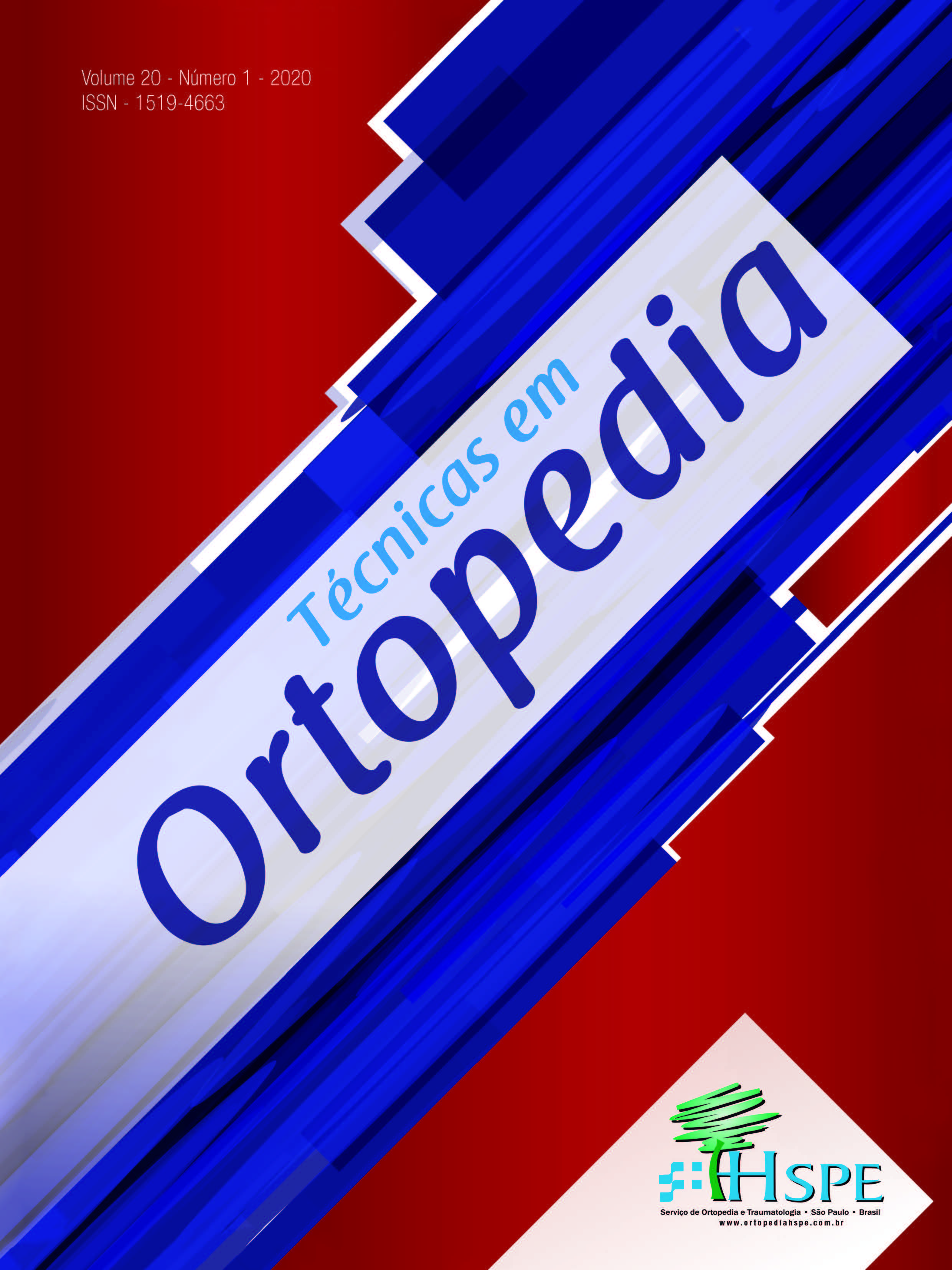Tratamento de fratura-luxação de Lisfranc com fixação percutânea
Keywords:
bone fractures, dislocations, metatarsal bones, tarsian jointsAbstract
Lisfranc fractures-dislocations are uncommon injuries (0.1-0.4% of fractures-dislocations). The most frequent injury mechanisms are: car accidents, animals falls and falls from height. In its treatment, a surgical approach with correction of the Lisfranc joint and fixation under direct visualization or by image intensifier is imperative in the case of percutaneous fixation with Kirchner wires, as is the case in question. We will present a case report of a 65-year-old patient with a Lisfranc fracture-dislocation and surgical treatment through indirect reduction and internal fixation with Kirschner wires.
Downloads
References
Quénu E, Kuss G. Etude sur les luxations du métatarse. Rev Chir. 1909;39:281-336.
Salomão O, Arroyo LSM. Fratura-luxação de Lisfranc: tratamento. Rev Bras Ortop. 1990;25:293-5.
Goossens M, De Stoop N. Lisfranc’s fracture-dislocations: etiology, radiology, and results of treatment. A review of 20 cases. Clin Orthop Relat Res. 1983;(176):154-62.
Lu J, Ebraheim NA, Skie M, Porshinsky B, Yeasting RA. Radiographic and computed tomographic evaluation of Lisfranc dislocation: a cadaver study. Foot Ankle Int. 1997;18(6):351-5.
Myerson MS, Fisher RT, Burgess AR, Kenzora JE. Fracture dislocations of the tarsometatarsal joints: end results correlated with pathology and treatment. Foot Ankle. 1986;6(5):225-42.
De Palma L, Santucci A, Sabetta SP, Rapali S. Anatomy of the Lisfranc joint complex. Foot Ankle Int. 1997;18(6):356-64.
Aitken AP, Poulson D. Dislocations of the tarsometatarsal joint. J Bone Joint Surg Am. 1963;45:246-60.
Faciszewski T, Burks RT, Manaster BJ. Subtle injuries of the Lisfranc joint. J Bone Joint Surg Am. 1990;72(10):1519-22.
Vico P, Mainil-Varlet JP. [Fracture-dislocations of Lisfranc’s joint: a rarity?]. J Chir (Paris). 1990;127(11):561.
Leenen LP, van der Werken C. Fracture-dislocations of the tarsometatarsal joint, a combined anatomical and computed tomographic study. Injury. 1992;23(1):51-5.
Hardcastle PH, Reschauer R, Kutscha-Lissberg E, Schoffmann W. Injuries to the tarsometatarsal joint. Incidence, classification and treatment. J Bone Joint Surg Br. 1982;64(3):349-56.
Arntz CT, Veith RG, Hansen ST Jr. Fractures and fracturedislocations of the tarsometatarsal joint. J Bone Joint Surg Am. 1988;70(2):173-81.





